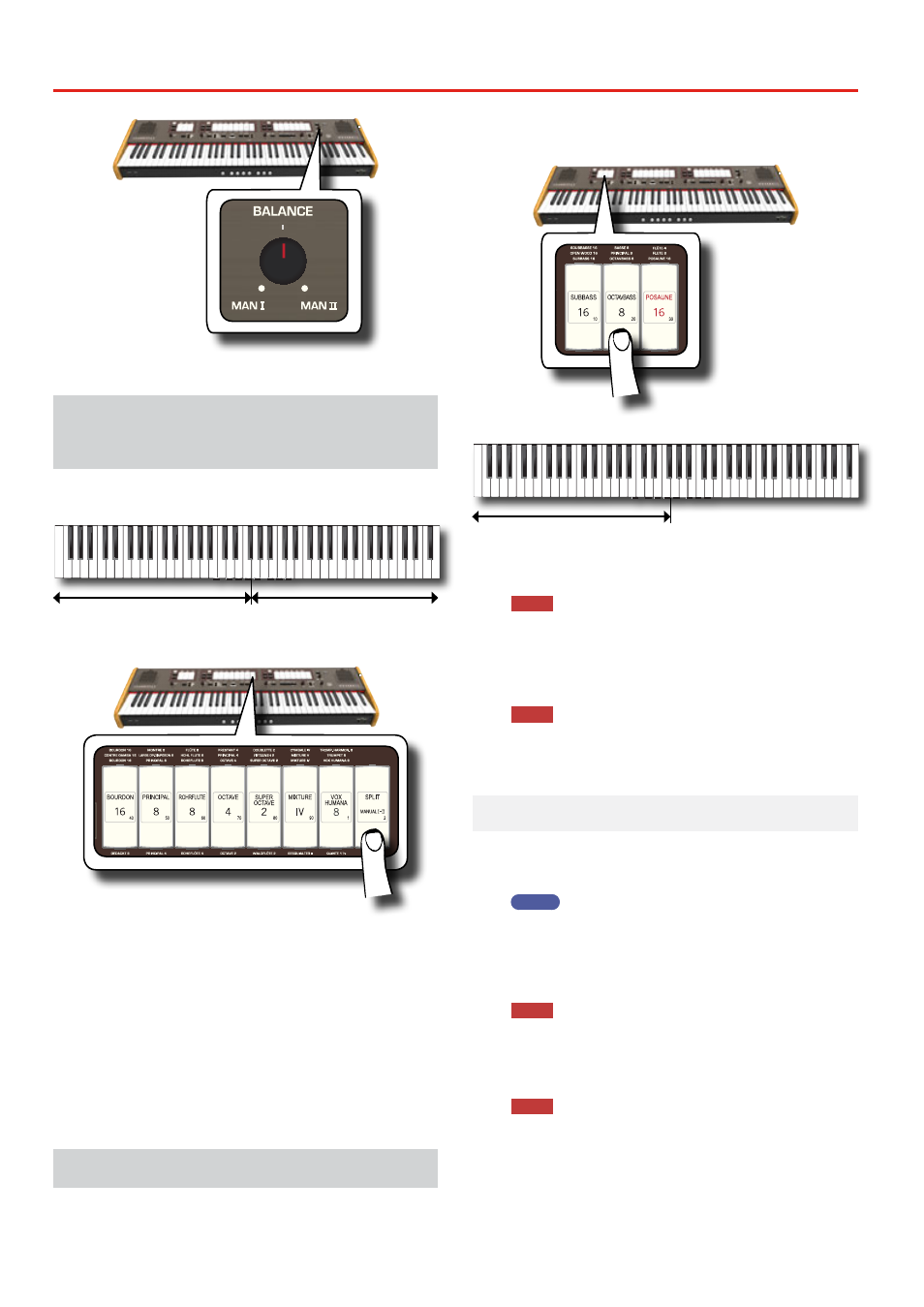Using the pedal division, Playing the pedal section with a pedalboard, Parts (split) using the pedal division – Dexibell CLASSICO L3 76-Organ User Manual
Page 22: Ee 22, Split)" (p. 22), Organ sounds

22
Organ Sounds
VOLUME
PEDAL
POWER PORT
5 VOLT
5.
Press the upper part of tilt tab to switch off the sound
.
Playing the MANUAL I and II Divisions
in Separate Keyboard Parts (SPLIT)
CLASSICO L3 gives you the possibility to assign the MANUAL I section to
the left half of the keyboard, and play the MANUAL II section in the right
half.
MANUAL I
MANUAL II
F#4
1.
Press the bottom part of the [SPLIT/MANUAL I/II] tilt tab in
the MANUAL I section to uncouple the manuals.
PIANO
HARPSICHORD
TUNING
TEMPERAMENT
TRANSPOSE
Its indicator lights.
2.
Press the bottom part of a MANUAL I tilt tab to activate
the desired register.
The indicator lights. You can activate as many registers as you like.
3.
Press the bottom part of a MANUAL II tilt tab to activate
the desired register.
You can activate as many registers as you like.
4.
Play the keyboard.
The left half of the keyboard is now assigned to the MANUAL I
division, and the right half to the MANUAL II division
.
Using the PEDAL Division
The PEDAL division can be played via the keyboard, or with a commercially
available MIDI pedalboard.
If you use the keyboard, the PEDAL division is monophonic and the
leftmost note played on the keyboard is added to the PEDAL division.
1.
Use a PEDAL tilt tabs to add a bass note to your playing
.
BASS
ORCHESTRA
ORGAN
The bass notes are only added to the notes played in the E1~F#4
range:
PEDAL
E1 ~ F#4
2.
Play a keyboard in the range E1~F#4.
The bass note corresponds to the lowest note you play.
NOTE
Please note that the maximum high note of the Pedal part is
F#4. If you set the split point greater then of F#4 note, the Pedal
part will always play up to F#4 .and not more.
Instead, if you set the split point below the note F#4 , the Pedal
part follows the new range of the split point
NOTE
If you connect a MIDI pedalboard to the MIDI IN socket on the
CLASSICO L3's rear panel, the PEDAL part can no longer be
played via the keyboard in polyphonic mode.
Playing the PEDAL section with a pedalboard
Connecting a MIDI pedalboard to the MIDI IN socket on the CLASSICO L3's
rear panel, you have a complete organ with 2 manuals. The PEDAL section
is played by the pedalboard.
MEMO
When you connect a MIDI pedalboard to the MIDI IN socket on
the CLASSICO L3, the PEDAL section play in polyphonic mode.
1.
Use a MIDI cable to connect the MIDI pedalboard to the
MIDI IN socket of the CLASSICO L3. See p. 18.
NOTE
Refer to the owner's manual of the MIDI pedalboard to power it.
The CLASSICO L3 recognizes that a device has been connected
to the MIDI IN socket and automatically the PEDAL section can
be played by the pedalboard.
NOTE
If your CLASSICO L3 does not recognize that you connected a
pedalboard, please check the ""MIDI PedalBoard"" parameter p.
2.
Press the lower part of a PEDAL tilt tabs to play bass note
.